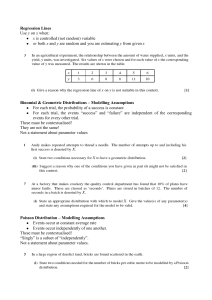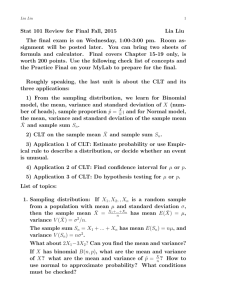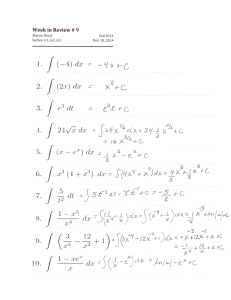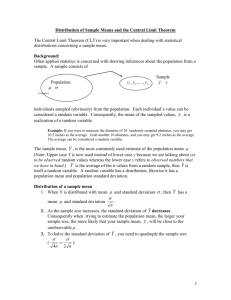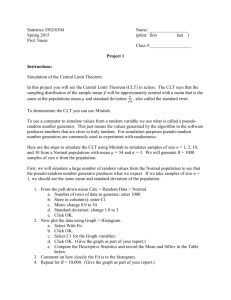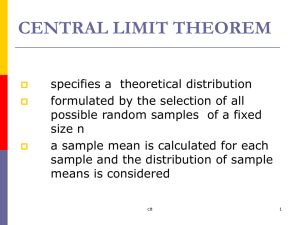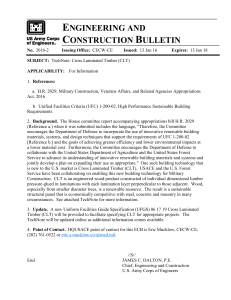Why Normal Distribution Is So Popular?
advertisement
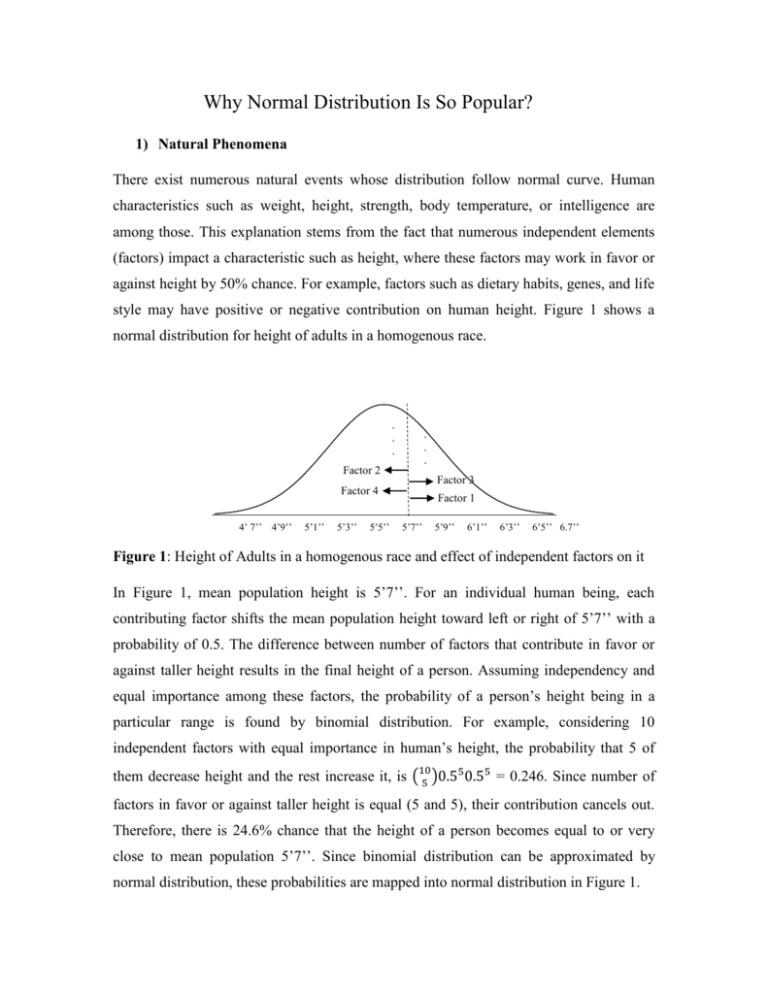
Why Normal Distribution Is So Popular? 1) Natural Phenomena There exist numerous natural events whose distribution follow normal curve. Human characteristics such as weight, height, strength, body temperature, or intelligence are among those. This explanation stems from the fact that numerous independent elements (factors) impact a characteristic such as height, where these factors may work in favor or against height by 50% chance. For example, factors such as dietary habits, genes, and life style may have positive or negative contribution on human height. Figure 1 shows a normal distribution for height of adults in a homogenous race. . . . . . . Factor 2 Factor 3 Factor 4 4’ 7’’ 4’9’’ 5’1’’ 5’3’’ 5’5’’ Factor 1 5’7’’ 5’9’’ 6’1’’ 6’3’’ 6’5’’ 6.7’’ Figure 1: Height of Adults in a homogenous race and effect of independent factors on it In Figure 1, mean population height is 5’7’’. For an individual human being, each contributing factor shifts the mean population height toward left or right of 5’7’’ with a probability of 0.5. The difference between number of factors that contribute in favor or against taller height results in the final height of a person. Assuming independency and equal importance among these factors, the probability of a person’s height being in a particular range is found by binomial distribution. For example, considering 10 independent factors with equal importance in human’s height, the probability that 5 of them decrease height and the rest increase it, is (10 )0.55 0.55 = 0.246. Since number of 5 factors in favor or against taller height is equal (5 and 5), their contribution cancels out. Therefore, there is 24.6% chance that the height of a person becomes equal to or very close to mean population 5’7’’. Since binomial distribution can be approximated by normal distribution, these probabilities are mapped into normal distribution in Figure 1. 2) Manufacturing/Service Industry Numerous features in manufacturing and service industries follow normal distribution. For example, two important service indices in a shipping company is the mean and standard deviation of delivery time. These two indices can be explained by a normal curve with mean and standard deviation of delivery time. Mean and standard deviation of service time in cleaning companies is another example of the phenomena with normal distribution. 3) Central Limit Theorem (CLT) CLT explains that there is a strong relation between sample size and the extent to which a sampling distribution resembles normal curve. Batch size samples are large enough so that their weight, volume, or dimension can be approximated by normal distribution even though the population distribution itself is not normal. In order to use CLT, measurement results needs to be reported as an aggregated value. For example in continuous production lines such as beverage, steel, or oil industry, weight of product is measured per batch (bar or barrel). There are practical justifications behind this measuring method such as reducing direct costs and inspectors’ working hours. However, one important advantage is that aggregated measures follow normal distribution, no matter what distribution each individual observation has. Therefore, quality control team who inspects these features in production lines take advantage of CLT to inspect these properties as an aggregated value for the whole batch. 4) Independence of Distribution Parameters (µ, σ) In contrast with binomial or exponential distributions, parameters of normal distribution are independent from each other. As a result of this interesting property, if any error occurs in measuring population mean, µ, it does not affect standard deviation measure, σ. σ is also considered as the quality measure. This independency does not exist in regression parameters b0 and b1. This is because b0 is estimated as function of b1, b0 = y b1 x

